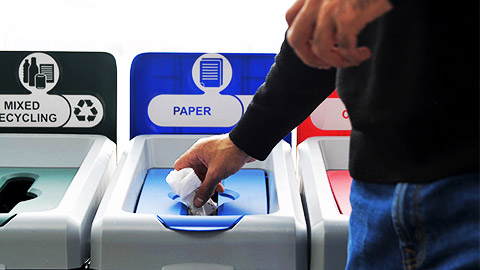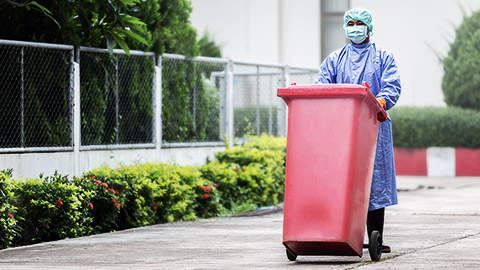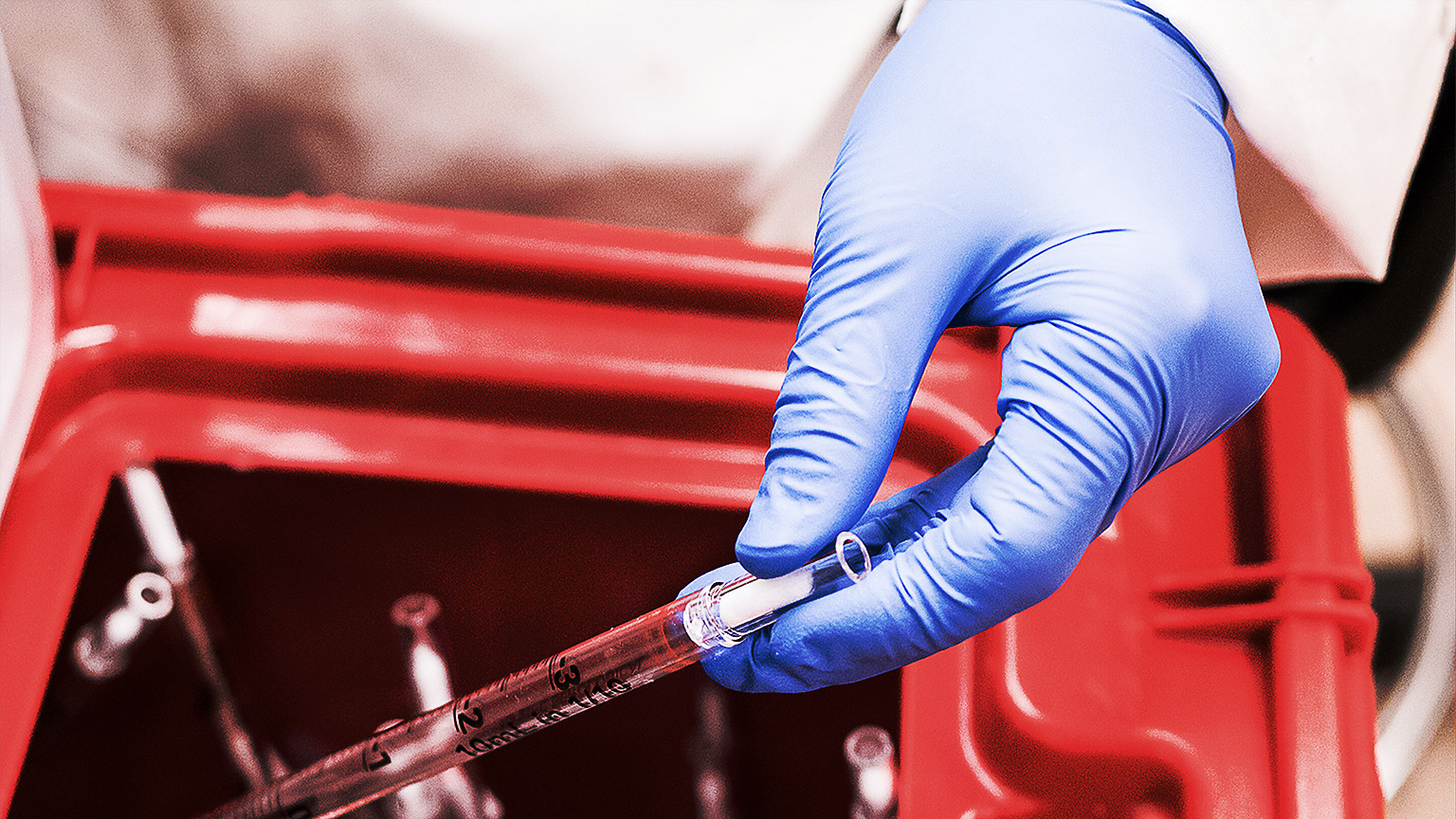Your role as an employee within the animal care industry comes with several responsibilities. You are not only responsible for the animals you care for, but also for how your actions impact the environment.
Your environmental responsibilities include a duty of care to:
- follow any legal or reasonable directives of management relating to environmental sustainability that may be communicated in written or verbal form.
- reduce and/or improve your use of consumables such as energy, water, transportation, hazardous materials and disposable (waste) products.
- conduct regular monitoring audits of your immediate work area and practices (or the wider organisation if you have access) to determine if more efficient equipment or processes could be implemented.
- report any broken or inefficient equipment, appliances or practices.
- encourage others to be environmentally conscious.
As your experience and knowledge begin to develop, so too will your confidence and ability to recognise environmental issues and implement sustainable practices. While management is responsible for implementing changes and delivering the appropriate training it is important for you to stay on top of any changes to environmental sustainability practices that occur within your industry.
You can make improvements to the amount and number of resources you consume in the workplace, even if your place of employment doesn't have any official environmental sustainability policies or procedures. Once you have identified the environmental and resource issues within your workplace and gained some insight into their scope, you will be able to assess the resources that are used in your role and the approach you take to environmental efficiency.

It is important to review the consumption of and any inefficiencies regarding the use of all resources used in your workplace. To remain conscious of minimising waste, careful measuring, correct dilution rates and good storage practices are also important. For example, paper is one of the most commonly used resources in almost all workplaces. Think about how you could reduce paper waste or have a look at the ‘Simple changes to make your workplace resource efficient’ (pdf) factsheet from Sustainability Victoria.
Can you think of other workplace resources that could be used more efficiently?
Common resources that are used in animal care workplaces include, but are not limited to:
- animal shampoo
- animal food
- kitty litter
- medications for animals
- flea and tick control products
- disinfectants and antiseptics
- printer ink and cartridges
- paper towel
- washing up liquids and other cleaning products
- bandaging materials and other single-use disposables
- clipper blades, scissors, combs and brushes
- bags for customer purchases
- poo bags.
Once you have identified the resources you use in your role, ask yourself some questions such as:
- How often do you use these resources?
- Could the resources be replaced with recycled materials or environmentally sustainable resources?
- Could you change your work practices to reduce the use of materials and resources?
Once you have identified the resources you use in your work role you can then begin to work out your current usage to estimate the reduction that could occur if you changed some of your processes and procedures. Once you have identified the resources and how much of them you use in your role, you can then estimate the reductions that could occur if you changed some of your processes and procedures.
The following table outlines some common considerations for each of the five main areas of environmental sustainability.
| Area of sustainability | Considerations: Ask the questions |
|---|---|
| Energy |
|
| Water |
|
| Transportation |
|
| Hazardous Materials |
|
| Waste Management |
|
By being aware of your resource use and making even small improvements, you will make a difference and set a good example for others regarding environmental sustainability.
Workplace environmental sustainability audits are larger versions of personal resource monitoring and can be conducted internally or externally. They may be preventative, as a means of improving operations, efficiency and safety, or reactionary as a result of an incident. Preventative audits are the best option as reactionary audits may be too late to avoid fines or legal consequences for the business.

Internal audits
Internal audits are often undertaken by a committee of workplace representatives or, if the business is large enough, by a specific department or person dedicated to environmental sustainability. During the internal audit process, environmental hazards and their associated risks should be identified and evaluated. The environmental sustainability audit process may be combined with a workplace, health and safety audit.
Internal audits often follow pre-determined checklists of things to inspect and monitor. For example:
| Internal sustainability checklist | Yes (Y) | No (N) | Comments |
|---|---|---|---|
| Type of lighting equipment is used in the workplace (incandescent, fluorescent, halogen or LED) | |||
| Lights left on in the workplace unnecessarily (after hours, weekends or public holidays) | |||
| Timing or motion control devices to limit the use of unnecessary lighting | |||
| Opportunities to increase the use of natural light (more windows and skylights) | |||
| Computers and other electrical equipment are switched off at the wall each night | |||
| Check the energy efficiency rating of appliances like refrigerators, washing machines and dishwashers | |||
| Run full wash cycles only | |||
| Controls in place to minimise printing and toner use | |||
| Recycling programs utilised for paper and toner cartridges | |||
| Low-flow taps/showerheads in use | |||
| Toilet cisterns feature dual flush buttons | |||
| Recycled water or rainwater tanks used to supply water for hoses and other high water use appliances, like hydro-baths | |||
| Recycling bins available | |||
| Food waste tracker used to monitor and eliminate unnecessary food waste at facility | |||
| Rotation of stock | |||
| Expiry dates check and/or only long expiry dated stock accepted in orders |
Scenario

Cassandra works as an animal attendant at a new kennel and cattery. Cassandra has recently taken over cleaning out the three food-fridges in the dog runs (small/puppies, medium and large runs) and she has noticed that a lot of wet dog food is thrown out. Multiple cans of the same food are often thrown out because they were open in the fridge.
Cassandra mentioned this at a staff meeting. The owner asked her to keep track of the wastage and for everyone to have a think about what they can do to reduce the amount of wasted food. Currently, there is no policy on food storage at the facility.
It is the summer school holidays. The kennel is very busy with all cages full and lots of admissions and discharges each day. The kennel offers both wet and dry food to dogs staying overnight. Some dogs are on specialised diets and are not offered the standard wet food. However, the standard wet food is:
- Ivory Coat Wholegrain Lamb & Brown Rice, Puppy Loaf, 400 g
- Ivory Coat Wholegrain Chicken & Brown Rice, Adult Dog Loaf, 400 g
- Ivory Coat Grain Free Lamb & Kangaroo, Adult Dog Can 400 g.
Cassandra recorded the following information about the amount of food thrown away (wastage) over the period of one week.
| Wastage (grams) | |||
|---|---|---|---|
| Day | Puppy loaf | Adult chicken loaf | Adult lamb/kangaroo can |
| Monday | 0 | 150 | 600 |
| Tuesday | 290 | 0 | 250 |
| Wednesday | 0 | 200 | 350 |
| Thursday | 300 | 125 | 300 |
| Friday | 0 | 150 | 250 |
| Saturday | 220 | 300 | 200 |
| Sunday | 100 | 150 | 300 |
| Total wastage | 910 | 1 075 | 2 250 |
Once Cassandra had the data, she began to think about how to reduce the wastage.
First, she researched the wet food the kennel used and discovered an alternative product for the puppy food, which was sold in smaller cans. Given that puppies are less common in the kennel, using a smaller product size would reduce the amount of food left over in an open can. Further research showed that once opened, canned food stored correctly must be used within 3 days of opening.
Cassandra proposed the following procedures to develop the new food storage policy:
- Use cling wrap to seal opened cans in the fridge.
- Write the date the can was opened on the can.
- Check the fridge at beginning of the day and ensure that the open cans are displayed with the oldest at the front (stock rotation).
- Encourage staff to check the fridge for existing open cans before opening a new can.
Can you think of any other suggestions for the new food storage policy?
There are many different factors that lead to food wastage in animal care facilities, including incorrect ordering levels, failure to rotate stock, poor storage techniques or the nature of the business.
The following are some easy ways to reduce wastage of food within animal care facilities:
- Use correct storage temperatures
- Ensure animals aren’t being overfed
- Correctly store leftover food to prevent pest infestations, moulds, spoiling or other damage
- Find an alternative supplier if their minimum order is too high for your facility
- Rotate stock and check expiry dates often
- Use an alternative product such as dry food instead of wet food or vice versa
- Donate excess stock to charities or give to staff with animals
- Discount stock that is close to expiry
- Label opened items with the date opened
- Store and seal leftover food in airtight containers
- Freeze and defrost food as needed.
External audits
External audits are carried out by personnel that do not work in the same workplace. There are a variety of private external audit companies that provide preventative consulting services for workplaces. Your workplace may use such a company, in which case you may be required to participate in their audits. This may include being interviewed about your work practices or having someone observe you working for a period of time.
Regulatory audits that are the result of an incident are often conducted by government employees from the relevant State or Territory environmental protection department (or similar). Full compliance with these types of audits is required and management will likely be present as part of the proceedings.
If you were involved in or are responsible for the incident in question, you may be required to undertake further training, face disciplinary action or may have your employment terminated. This is why you must be aware of your responsibilities and always comply with them.
Outcomes of audits
Informal personal resource use monitoring may result in you identifying certain environmental hazards, risks, or inefficiencies. Part of your duty of care is to notify your supervisor and/or applicable environmental sustainability officer or team of these issues.
Reporting may be:
- Informal, such as a face-to-face conversation, telephone call or basic email.
- Formal, such as via a hazard identification or incident notification form, which may be paper-based or electronic. Another example of a formal method of reporting would be to add the issue to the agenda of the next formal staff meeting.
After a formal internal audit has been conducted by authorised staff members, a report is usually generated for management's consideration. The report will outline the results of the audit and provide recommendations for improvements.
Management will determine if any of the following is to occur:
- policy or procedural implementation or amendment
- repair existing equipment
- purchase new equipment or resources
- conduct training for staff.
Some changes may be initiated immediately. However, other changes may be phased in due to their complexity or cost. Remember, it is not necessarily the best option to replace products or equipment that have already been purchased just because they are not the most environmentally efficient option. Management may elect to wait until items run out or break down and need to be replaced before considering environmentally sustainable products or equipment.
Measurement is a critical component of improving performance for most areas within an organisation. This is also prevalent in resource use and sustainability.
Common techniques for measuring resource usage may include examination of:
- invoices from suppliers to compare the volumes of orders and per-unit cost of a product or service
- examining data provided in utility bills, such as water and electricity bills.
Why measure and document resource usage?
Most environmental sustainability policies and procedures aim to get organisations to use their resources more efficiently, and as a result, create less waste. You will be able to determine how effective a policy or procedure is by measuring the resource usage of the facility.
The measurement of resource usage will also inform you of where to focus your efforts. In other words, if you find several areas where you can improve, you will want to find the most important couple of areas and focus on those first before starting on the others. By doing this you are increasing the chances of success for the improvements to environmental sustainability.
You can also use data and best practice information about your resource usage to understand how your facility compares to others. You can obtain information on best practices for resource usage from an environmental group or your industry body. For instance, you may have measured your facility’s resource usage and discovered that although there are some additional wastes that could be recycled, the electricity usage is much higher than the industry best practice. As such you may suggest some initiatives to reduce the usage of electricity before the waste reduction ones.
Calculations and formulas
When collecting data on resource usage, you will need to understand how to calculate the usage as well as the appropriate units of measurement. Let’s look at some common methods and examples for calculating the use of water and electricity (or energy).
Measuring water use
Water usage is measured in kilolitres (kL). 1 kL is 1 000 litres. Every residence and business place has a water meter that measures the amount of water that is used by the premises. To calculate water usage, you need to know how to read the water meter. The following video, How to read your water meter and check for leaks (2:06 min), is an easy guide to help you measure water use.
Three methods can be used when measuring water in the workplace.
Method 1: Water bill
Read your water bill. The water bill will tell you exactly how much water has been used within a specific period.
Method 2: Calculator tools
You can calculate your daily average water usage using an online calculator tool, such as those provided by Sydney Water. The tool allows you to enter calendar dates or number of days in a period, total water usage amount or water bill information to calculate the average amount of water used each day in the period you are looking at. You can also do these calculations yourself.
For example, assume that your total water usage for a billing period of 30 days was 5.25 kL and you want to know what your average daily use is. Simply divide the total usage by the number of days in the billing period. Remember that 1 kL = 1 000 L!
$$\begin{aligned}\mathsf{Average\;daily\;usage}\;&=\;\frac{\mathsf{Total\;amount\;of\;water\;used}}{\mathsf{Number\;of\;days\;in\;period}}\\\\&=\;\frac{5\,250}{30}\\\\&=175\;\mathsf{L}\end{aligned}$$
Method 3: Meter measurements
First, use read the water meter to calculate the volume of water used each day in the period you wish to calculate. You should read the meter at the same time each day during this period.
To document your measurements, it is best to create a table. You may wish to do this digitally or with pen and paper. Make sure to plan the number of columns and rows you will need and include appropriate headings and units.
The following table is an example of a record of water meter readings over a period of four days. The first day you record the reading is Day 0, because you can’t calculate the usage for this day. It just gives you a starting point for the measured usage.
| Day | Time | Water meter reading (kL) |
|---|---|---|
| Day 0 | 8 am | 5 250 |
| Day 1 | 8 am | 5 500 |
| Day 2 | 8 am | 6 012 |
| Day 3 | 8 am | 6 020 |
| Day 6 | 8 am | 6 040 |
Next, calculate the difference between consecutive days to get the total usage for the previous day. Then add all the daily usage amounts to calculate the total usage for the period. Examples of these calculations have been demonstrated in the following table, using the data collected in the previous table.
| Day | Calculation | Total daily water use |
|---|---|---|
| Day 1 |
(Day 1 reading) - (Day 0 reading) 5 550 - 5 250 kL |
= 250 kL |
| Day 2 |
(Day 2) - (Day 1) 6 012 - 5 550 kL |
= 462 kL |
| Day 3 |
(Day 3) - (Day 2) 6 020 - 6 012 kL |
= 8 kL |
| Day 4 |
(Day 4) - (Day 3) 6 040 - 6 020 kL |
= 20 kL |
| Total usage for this period | 250 + 462 + 8 + 20 = 790 kL | |
Finally, now that you have the total water usage for the period, you can calculate the average daily usage using the same equation from Method 2.
$$\begin{aligned}\mathsf{Average\;daily\;usage}\;&=\;\frac{\mathsf{Total\;amount\;of\;water\;used}}{\mathsf{Number\;of\;days\;in\;period}}\\\\&=\;\frac{790}{4}\\\\&=197.5\;\mathsf{kL}\end{aligned}$$
While this method takes longer, it allows you to determine the days you are using the most amount of water. From these calculations, you can see that the most amount of water used was on day two.
Measuring electricity
Electricity is measured in Watts (W). The equivalent three methods can be used to measure electricity as to measure water usage:
Method 1: Electricity bill
Reading your electricity bill. The electricity bill will tell you exactly how much electricity has been used within a specific time.
Method 2: Calculator tools and devices
Calculate the energy use or annual running cost of any appliance within the workplace using an online appliance electricity cost calculator, such as the one provided by Reduction Revolution. The electrical cost calculator allows you to work out how much electricity is being used by one appliance over a year.
You can also buy an appliance power meter. A power meter is a device that plugs into the wall socket and the appliance is then plugged into the power meter. The power meter measures the amount of electricity (energy) used by the appliance that is plugged in.
Method 3: Meter measurements
First, use read the electricity meter to calculate the amount of energy used each day in the period you wish to calculate. You should read the meter at the same time each day during this period.
To document your measurements, create a table with the appropriate number of columns and rows. Don’t forget to include headings and units where necessary.
The following table is an example of a record of electricity meter readings over a period of four days. Remember that Day 0 is to work out the starting point for the measured usage.
| Day | Time | Electrical meter reading |
|---|---|---|
| Day 0 | 8 am | 2 500 W |
| Day 1 | 8 am | 3 500 W |
| Day 2 | 8 am | 3 750 W |
| Day 3 | 8 am | 4 080 W |
| Day 4 | 8 am | 5 000 W |
Next, calculate the difference between consecutive days to get the total usage for the previous day. Then add all the daily usage amounts to calculate the total usage for the period. Examples of these calculations have been demonstrated in the following table, using the data collected in the previous table.
| Day | Calculation | Total daily energy use |
|---|---|---|
| Day 1 |
(Day 1 reading) - (Day 0 reading) 3 500 – 2 500 W |
= 1 000 W |
| Day 2 |
(Day 2) - (Day 1) 3 750 – 3 500 W |
= 250 W |
| Day 3 |
(Day 3) - (Day 2) 4 080 – 3 750 W |
= 330 W |
| Day 4 |
(Day 4) - (Day 3) 5 000 – 4 080 W |
= 920 W |
| Total usage for this period | 1 000 + 250 + 330 + 920 = 2 500 W | |
Finally, now that you have the total electrical usage for the period, you can calculate the average daily usage using the following formula.
$$\begin{aligned}\mathsf{Average\;daily\;usage}\;&=\;\frac{\mathsf{Total\;amount\;of\;water\;used}}{\mathsf{Number\;of\;days\;in\;period}}\\\\&=\;\frac{790}{4}\\\\&=197.5\;\mathsf{kL}\end{aligned}$$
As with calculating water usage, this method of measuring usage provides more detail around differences in usage across the period being looked at.
Measuring finite resource usage
To measure water and energy usage, you measure the flow of the resource into the workplace as a whole or to a specific appliance. However, many resources are used in discrete units, such as reams of paper, cans of dog food or packets of kitty litter.
To measure the usage of these types of resources it can be easier to examine ordering invoices or record every time a new packet is opened.
For example, to calculate the average amount of paper used per person, per day you will want to find out the total amount of paper used during a certain period. You can do this by finding out how much paper is used over a period, say a month, and then dividing this number by the number of days in the period. This will give you the daily average usage of the resources. Then divide the daily average usage by the number of personnel who use that resource to calculate the average amount per person, per day. You can then use figure like these to compare work areas or compare efficiencies of different procedures.
Methods for documenting the usage of resources

Sometimes reading and interpreting numerical information and data can be overwhelming. Presenting data and information in graphs and tables tends to make it much easier to understand. Graphs make it easy to see any trends that are present and have an easy way to show this data to others who may need to know. There may be specific systems that are in place within your workplace that is used the generate the data and present it in a readable format. It is up to senior staff and management to ensure their staff have been trained on how to read and interpret these documents to ensure the team is across resource usage. The following images are some examples of how documentation of resources can be displayed.
Knowledge check
Complete the following questions.
